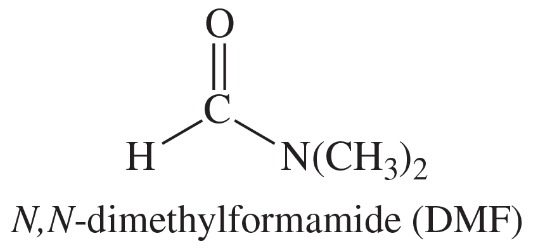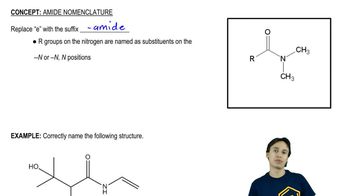Show how you would use an acid chloride as an intermediate to synthesize.
(a) N-phenylbenzamide (PhCONHPh) from benzoic acid and aniline.

 Verified step by step guidance
Verified step by step guidance Verified video answer for a similar problem:
Verified video answer for a similar problem:



 9:32m
9:32mMaster NAS - The Three Rules with a bite sized video explanation from Johnny
Start learning